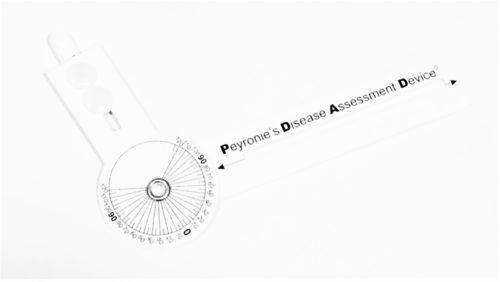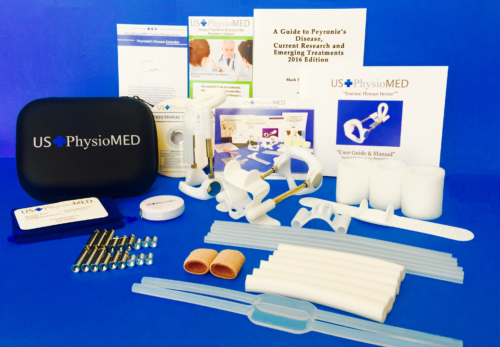Guide to Peyronie’s Disease – Current Research and Emerging Treatments 2016 Edition by Mark M. Newell, Ph.D.
$12.95
The number of Peyronie’s Disease cases reported in the United States has recently undergone a dramatic increase. This is either because men are now more willing to discuss the issue with their physicians than in the past, or, for some as yet unknown reason, there is actually an increase in the incidence of the disease. Most likely, both factors account for the fact that ten percent of men in the US are suspected of having the disease. The disease is one that has not attracted the attention of mainstream researchers in the past, or that of pharmaceutical companies or medical device manufacturers. For this reason the author (and doubtless those men afflicted with Peyronie’s Disease who read this guide) wishes to thank the organizations, companies and experts who have taken on the challenge of finding a treatment for the disease, and who have made this guide possible through the contribution of data and information about their current research. The Association of Peyronie’s Disease Advocates has established itself as the single most reliable source of information on management and treatment news of the disease. Dr. Laurence A. Levine, mentioned below, should also be given special additional credit for the frequent assistance rendered to the author during the writing of the text. The following experts were also consulted on the contents of this guide and were kind enough to offer observations and advice:
Mr. Michael Hays, President, US PhysioMED, Inc. Mike Hays spearheaded the development and design of the only “Linear Traction Therapy Device” for Peyronie’s Disease Rehabilitation over 15 years ago, with a medical IRB trial study to support its claims. He has been the motive force behind his Company’s dedication to better sexual health and wellbeing through science-based products, developed in concert with leading researchers in American Medicine and is Corporate Advisor and sits on the Board of the IMAXX Condom Card Association, involved with Bill & Melinda Gates Foundation.
Dale Henn, President, Motiva Marketing Group, an all inclusive brain trust of over 30 years of expert, genius and a lifetime of National and International development, design, sales and distribution of many of the top HCV, HSN, and Amazon Products, with manufacturing and development and invention of Health, fitness and sexual products.
Wayne Hellstrom, M.D., F.A.C.S., Professor of Urology,
Chief of Andrology (male infertility and sexual dysfunction) at Tulane University School of Medicine in New Orleans.
Dr. Fouad Ghaly, of the Ghaly Center for Regenerative Medicine of Beverly Hills, Ca. also provided additional advice with respect to tissue regeneration and cellular mitosis. Dr. Ghaly has also been instrumental in design of USPhysioMED device and continues to work on more effective traction mechanisms.
Steven Lamm, M.D., known to millions as the doctor on ABC-TV’s “The View,” is a practicing internist and faculty member at New York University School of Medicine. He is also author of the internationally best-selling sexual health book “The Hardness Factor” from Harper- Collins.
Laurence A Levine M.D., FACS, Professor of Urology, Rush University, Chicago, Illinois. Dr. Levine is the author of “Understanding Peyronie’s Disease” from Addicus Books, which we highly recommend to those readers seeking in-depth information in an easy question-and-answer format. Dr. Levine is also the Editor of “Peyronie’s Disease: A Guide to Clinical Management” from Humana Press, a compendium of professional medical information for Peyronie’s treatment.
Ronald W. Lewis, M.D., is Chief of Urology at the Medical College of Georgia and a world-renowned expert on sexual dysfunction.
John Mulhall, M.D., is director of the Male Sexual and reproductive Medicine Program at the Memorial Sloane Kettering Cancer Center. He has provided constant support for research projects and the production of this paper.
Dr. Alejandro Carvajal Obando of Medellin, Colombia, also reviewed this manuscript and commented. Dr. Carvajal is one of South America’s leading cific research interest in the treatment of Peyronie’s Disease.
| shipping | $5.95 |
|---|
Be the first to review “Guide to Peyronie’s Disease – Current Research and Emerging Treatments 2016 Edition by Mark M. Newell, Ph.D.” Cancel reply
Related products
Peyronie's Disease
Peyronie's Disease






Reviews
There are no reviews yet.